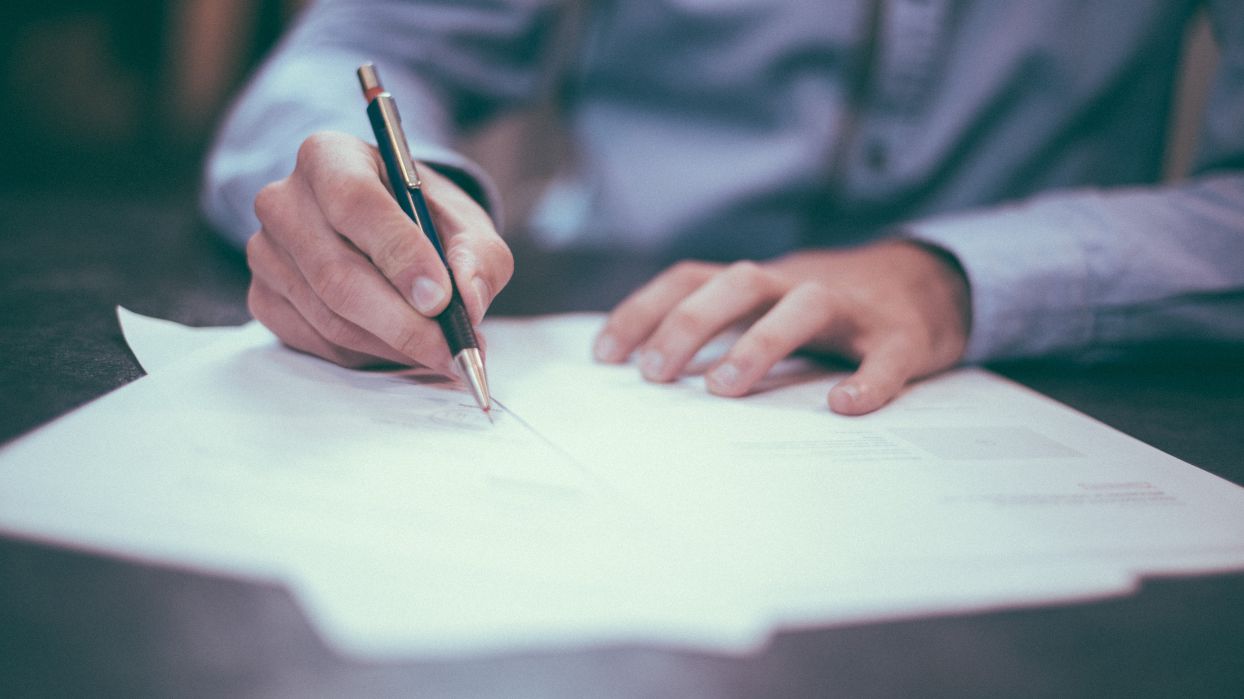With most litigation being resolved before trial, the importance of high-quality expert written evidence cannot be overstated. The written evidence determines how each party evaluates their prospects of success and the potential settlement value of the claim. The expert’s role in determining issues of liability, causation and the extent of harm is, therefore, central to a successful claim.
In the first of a series of three articles, partner Hugh Johnson and senior paralegal Dulcie Osborne consider the essential elements and formatting of an expert report.
- Core principles
1.1. Report for the court
Irrespective of who instructs the expert, the expert’s overriding duty is to help the court on matters within their expertise (Civil Procedure Rule (CPR) 35.3). This rule is intended to prevent experts from being partisan on any issue or, worse, being perceived as a “hired gun” with an opinion for sale. Since the 2011 case of Edwards Tubb v JD Wetherspoon (a case where an expert was swapped), it has been well established that the court controls the evidence before it and addressed to it.
1.2. Initial advice – the role of privilege
While this article primarily addresses the role of the expert to the court, it is important to address the distinct nature of initial expert advice.
The first expert report is usually obtained before the commencement of court proceedings, with the intention of exploring a possible claim. By its nature, it is confidential advice to a solicitor and subject to legal privilege. To ensure that initial advice is not made subject to any disclosure requirement, it is important the document is clearly advisory. It should usually be marked as a “draft for litigation advice purposes”. In contrast to any later report intended for court use, the initial advice should never be addressed to the court.
Both the solicitor and advising expert should be aware that stepping beyond advisory work may bring a report within the court’s reach. In Rogerson v Eco Top Heat & Power [2021], the claimant obtained initial advice but later sought to change expert. Unfortunately, their advising expert had also conducted site visits and jointly interviewed witnesses with the defendant. He had, in essence, strayed into the role of a formal expert to the court. This led to a suggestion of “expert shopping”. The initial confidential pieces of advice were ordered to be disclosed as a condition of the court permitting a new expert.
1.3. Within your expertise
It may sound obvious, but experts must keep to their sphere of expertise. If an expert is minded to comment on issues that relate to other disciplines, it is important to qualify their comments by deferring to the discipline of an expert who may better assist the court. This avoids any criticism of overreach. In the recent patent case of Sycurio Ltd v PCI-Pal PLC [2023], one of the claimant’s experts, while an acknowledged expert in relation to part of the claim, was not an expert on several technical points addressed in her report. Under cross-examination, she was forced to make uncomfortable concessions, including admitting she had not understood key concepts and had relied upon “research” to try and understand technical documents. Unsurprisingly, the court gave no weight to any of her opinions on matters outside her direct expertise. Her legal team was forced to abandon elements of her evidence during the trial.
- Format and presentation
Most lawyers will have a view as to what constitutes a ‘good report’, ie one that is clearly presented. However, provided the court rules are met, there is a reasonable degree of freedom regarding the format. This note is intended to be a cross-check to assist you in preparing your report and ensure it is well-structured.
2.1. Practice Direction 35
The Practice Directions to Part 35 CPR set out essential requirements that are worth revisiting:
- to set out the nature of your qualifications
- to give details of any literature or material relied upon in making the report
- to provide a statement setting out the substance of all facts and instructions which are material to the opinions expressed in your report
- to make clear which of the facts stated in the report are within your own knowledge
- to set out any examinations or tests undertaken
- to set out any range of opinions on the subject
- to give reasons for your opinion
- to contain a summary of the conclusions reached
- to confirm that you have understood and complied with the court rules, and
- to provide a Statement of Truth.
The above points are relatively straightforward, but errors can creep in. For example, the wording of the Statement of Truth was changed on 1 October 2020. Three years on, some older templates still carry the previous wording, rendering the report non-compliant with the rules.
For clarity, we believe the format of expert reports should closely mirror the requirements of the court documents the legal team will prepare. Those requirements are set out in Practice Direction 5A.
2.2. Practice Direction 5A
Practice Direction 5A concerns the preparation of court documents generally. This part of the court rules provides that documents should be produced:
- on A4 paper
- with a 3.5 cm margin
- fully legible and normally be typed
- with consecutive page numbering
- with numbered paragraphs, and
- have all numbers, including dates, expressed as figures.
Ideally, page numbering should be at the centre bottom or in a top corner of the page. Since the Covid-19 pandemic, the reliance on paper copies and face-to-face meetings have been reduced to the point of eradication. Reports are invariably incorporated into large PDF bundles (much like the trial bundle). The bundle pagination will usually be at the bottom right of the page.
It will likely be easier for others to read your report if it is in a font no smaller than size 11. For ease of reference, if your report cross-refers to any documents, such as a medical record or another report, it is helpful to refer to the document and its page number (and paragraph), where possible.
Experts frequently need to quote from medical records or reports. Embedded screenshots of relevant medical entries, images, charts, diagrams or notes (provided they are legible) are acceptable without the need to re-type individual entries.
When quoting or reproducing clinical records or other documents within your report, it is essential to ensure there is a clear differentiation between what is quoted record, what is mere narrative/summary and what is your expert comment. Within a large paragraph, you might use brackets, a different typeface or bold to distinguish your remarks, for example: [Comment: this entry appears to be wrongly dated].
- Content of the report
While no two reports are the same, there are some points of general application when it comes to the content of your report and assisting the legal team in preparing the documentation referred to in your report.
3.1. Length of reports – opinion, not a comprehension exercise
Experts will need to summarise the background of the care provided before setting out their opinion. In complex cases, preparing that summary is an art, and reports can quickly become too lengthy. If too much information from the clinical records or other expert evidence is reproduced, it will duplicate other documents the court already has. In Harman v East Kent Hospitals NHS Foundation Trust [2015], Mr Justice Turner cited with approval comments from the President of the Family Division, Sir James Munby: “[T]oo many expert reports… contain too much history and too much factual narrative… expert reports must be succinct, focused and analytical. But they must also of course be evidence based.”
He concluded that unnecessary content may be detrimental insofar as there is a risk that “important points are lost in the vastness of the context in which they appear”.
3.2. Material documents
The index of documents available to the expert is sometimes treated as a mere formality. It is not. This is a statement of the documents received and considered before proffering an opinion.
To that end, experts should liaise with their solicitors to ensure they have seen everything. They should update that index when they have seen additional materials, adding any new documents and checking that documents are correctly dated and referred to. This is particularly important in complex or long-running cases where records will be updated and added to over time. Experts can expect to be challenged either at trial or with formal Part 35 questions if their report omits reference to a key document from the index that may otherwise have had a bearing on their expert opinion.
In the family case of Hertfordshire County Council v (1) Mother (2) Father [2022], the court excoriated an expert who had provided a formal medical report despite being unable to access both the imaging and the imaging reports that were likely to be key evidence. The expert had not made his solicitors aware that he was unable to review all the records and, worse, had completed the expert declaration confirming his evidence to be complete.
3.3. Paragraphs and subheadings
Sub-headings are particularly useful within your report. These will break up the report into smaller elements and allow you to address discrete issues. While each case is different, a typical liability report may helpfully include headings such as those in the example below:
- Material instructions
- Documents available/index
- Case summary
- Medical history
- Circumstances of injury
- Opinion,
- Conclusion.
Condition and prognosis reports or care reports will involve many more elements, and it will be appropriate to include many more sub-headings to present what may be a substantial body of information clearly.
As noted above, it is sometimes helpful for reports to set out a brief summary of the claim and the expert’s findings near the start of the report. This immediately informs the court of your view and ‘signposts’ the matters to be addressed. The report can then address the detail. An initial summary should rarely exceed one or two paragraphs. A short concluding section at the end of a lengthy report is essential and can be particularly helpful if it has been necessary to consider a range of expert opinions or alternate medical diagnoses in detail.
3.4 Factual disputes: how to deal with them
Frequently, there will be a dispute between the parties as to what occurred. This will usually be apparent from conflicting witness statements. It is for the court, not for you as an expert, to determine what occurred (ie to make a finding of fact). It may be possible to determine which sequence of events you consider more likely; however, care will need to be taken not to usurp the court’s role.
In cases where there are challenging factual disputes, it may be necessary to express your opinion with alternative scenarios, leaving the court to resolve the disputed factual issues.
3.5 Helpful literature
Experts will often want to refer to helpful publications in support of their expert view. Strictly speaking, there is no need to supply freely available published literature with your reports. Any unpublished research relied upon will need to be supplied. However, because the literature will inevitably need to be included within the trial bundle, it is helpful to have the relevant literature provided with the report. This approach makes it much more likely that those sources will be analysed sooner rather than later.
3.6. Your CV
Most expert reports contain, as required, a statement of qualifications and the current post of the expert at the start of the report. In preparing your report, it is helpful for a CV to be attached as an appendix. The court will want to have a full CV available when hearing from the experts at trial and determining what weight to give the expert evidence. You should update your CV periodically to ensure it remains current. Each case is different, but CVs are analysed by the parties to consider your skills and experience, ie the factors that make you an expert. Those may include matters such as practical experience of the issue(s) in dispute, types of employment and the like.
Finally, for medicolegal purposes, you may consider adding a section regarding the balance of your work between claimant/defendant/joint instructions. While it is not an essential requirement of any expert, in Muyepa v MOD [2022], Mr Justice Cotter expressed some concerns that the claimant’s expert (whom he had already roundly criticised) had only ever accepted instructions from a claimant perspective.
Further questions?
While the content of this article is intended to provide broad-brush guidance, it cannot be comprehensive or address issues specific to all cases or expert disciplines. However, you should feel supported by the legal team. Your solicitor will always want you to present your evidence in the best and clearest way. If you have any queries regarding the preparation of your report, do feel free to contact them.
You can find further information regarding our expertise, experience and team on our Clinical Negligence page.
If you require assistance from our team, please contact us.
Subscribe – In order to receive our news straight to your inbox, subscribe here. Our newsletters are sent no more than once a month.




